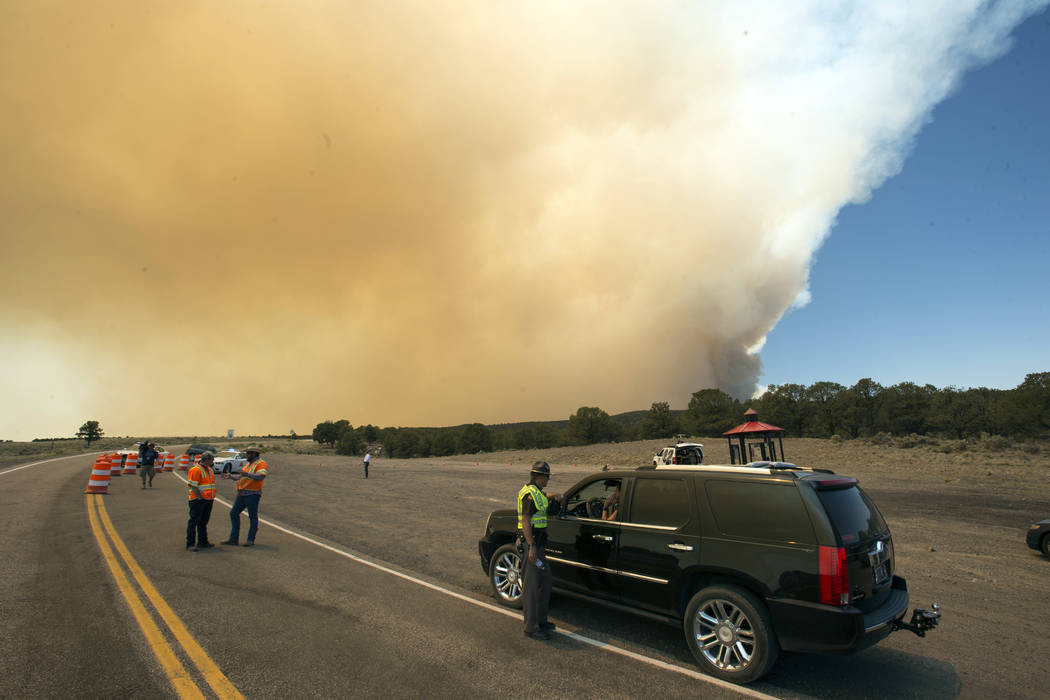Brian Head fire could affect fishing at Panguitch Lake

For generations of Southern Nevada fishermen, Utah’s Panguitch Lake has been a favorite summertime destination.
With an elevation of about 8,200 feet, the lake provides anglers with a chance to catch rod-bending rainbow trout and also offers a respite from the heat.
Surveys have shown that 90 percent of the people fishing on Panguitch Lake during the summer are from out of state and the vast majority of those are from Clark County, according to Richard Hepworth, Southern Region Aquatics Manager for the Utah Division of Wildlife Resources.
When asked if he found that statistic surprising, Hepworth said: “Yes and no. I mean, it’s closer to Panguitch Lake for people in Las Vegas than it is for people in Salt Lake City.”
In recent weeks, many Clark County anglers who frequent the 1,250-acre lake have been wondering what the future holds for the popular fishery. The cause of their concern is the Brian Head fire, which has burned almost 72,000 acres since June 17 and is not fully contained.
“I’m very concerned about Panguitch Lake, but we may get lucky and not have any impacts there,” Hepworth said. “It’s just kind of wait and see almost. We’re putting things in place to help be prepared for any catastrophic stuff. Right now, Panguitch Lake is in great shape. Fishing’s fantastic. People are doing good up there. It could change overnight.
“It’s so hard to know what exactly is going to happen on these situations. I’ve dealt with about three of these really monster fires like this, and every one of them ends up different. It’s just hard to predict, and it all depends on rain.”
The rains causing significant worry for Hepworth are the monsoonal ones that often bring heavy but localized storms that drop a lot of rain in a small area all at once. He expects those in August.
The full impact of those storms, he said, depends on where the cells hit on the mountain. In the right place, those storms could create resource-damaging ash flows from the burned areas along the three major tributaries that feed into the lake. While all three burned with some severity, he said it’s hard to say how much ash could come down each one.
“If it’s not too much, the fish will just move out of the way,” Hepworth said. “They’ll be fine, no big deal this year. If it’s a lot, if it really piles up through that whole lake, it could have negative effects and it could kill fish.”
In large enough concentrations, ash makes it difficult for fish to process oxygen and could even clog their gills. In the long term, the ash could react with the already-high nutrient load in the lake to create algae blooms, such as blue-green algae that can be toxic to fish.
“Those are things I’m worried about, but it is really hard to predict these things,” Hepworth said.
The DWR is working with the U.S. Forest Service and other state agencies in areas where the fire is out and things have cooled off. They are mapping the fire, evaluating its full impact and determining what rehabilitation efforts will be needed to jump-start recovery.
“Right immediately we’ll start with seeding and mulching, and all these things that will help, but none of those seeds will grow until you get some moisture on them,” Hepworth said.
That moisture, of course, has to come in the right amounts, just enough to stimulate seed growth but not enough to wash them away.
Hepworth said his No. 1 responsibility is to make sure Panguitch Lake and other nearby fisheries remain quality fishing destinations. But he faces a significant challenge and the possible loss of a popular fishery.
Freelance writer Doug Nielsen is a conservation educator for the Nevada Department of Wildlife. His “In the Outdoors” column, published Thursday in the Las Vegas Review-Journal, is not affiliated with or endorsed by the NDOW. Any opinions are his own. Find him on Facebook at @dougwritesoutdoors. He can be reached at intheoutdoorslv@gmail.com.












